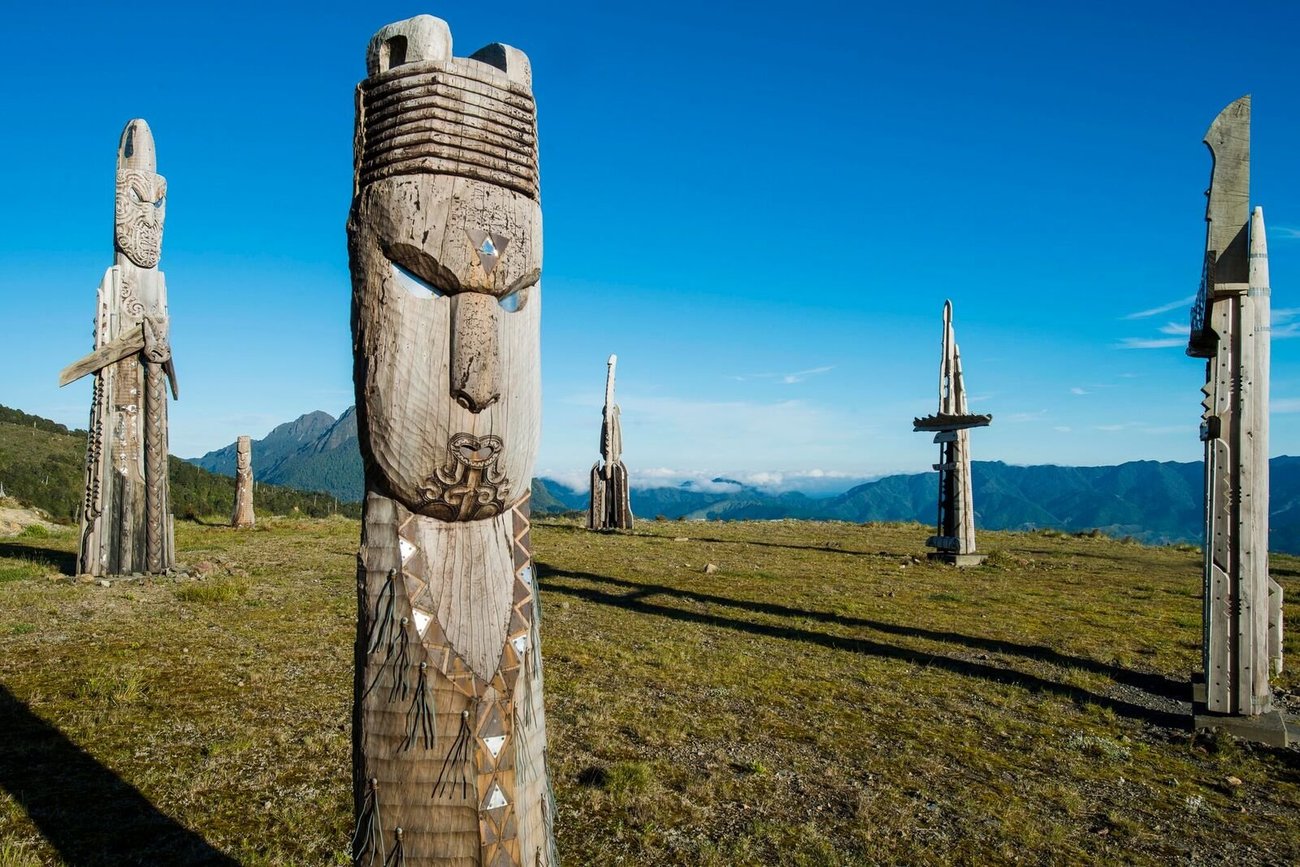Developing the underdeveloped: How Maunga Hikurangi will take tourism to the remote East Cape

Maunga Hikurangi offers guided tours to the sacred mountain of Hikurangi through a variety of packages, a four-wheel drive day tour up the mountain to geize at the historic carvings, a sunrise tour, and a helicopter tour to the summit of Maunga Hikurangi. Further, the programme invites community to engage with Ng?ti Porou culture as a means of educating the public on the significance of local iwi and surrounding land.
“A big part of tourism on the east cape is to bring back visitors. There is about 75,000 members of the iwi but only 1,000 live in Ruatoria,” Livingston says.
“We are doing it in such a way that keeps the numbers limited and creating an intimate experience. Up until recently noone has been allowed up the Hikurangi – it’s been very sacred.”
Since Maunga Hikurangi was previously sacrosanct, the process of deciding who is allowed to go up, as well as how the guides run the tours was much deliberated.
_large.jpeg)
Timothy Livingston
“Currently, we have five or six packages from the basic end to the high end, they are still a work in progress, we haven’t done our first visit or tourist guide. We are taking bookings and have partnered with Air NZ to help promote the experiences.”

“It’s a very slow and steady process, i’ve been working on it since March last year to get the brand together and ensure that everyone is happy about it.”
Additionally, Maunga Hikurangi hopes to limit the environmental vicissitudes of tourism.
Livingstone says, “Part of our experience, which is still in development is replanting around the pou. We will enable our guests to pick a plant from the native nursery, then we will give them an RFID or some kind of chip that will allow them to GPS to navigate their plant.”
He adds that in many areas of Hikurangi it is quite bear at the moment, and is in need of native planting. Thus, he hopes those who engage in the programme can add to the native regeneration.

“When I talked to one of the aunties about Hikurangi, they were like, she needs a new Korowai, she needs to be recovered and regenerated. It is a bit bare at the moment. We see that as a way to engage our guests with the environment and to give something back.”
Further, Livingstone hopes the campaign will be a catalyst for broader industrial growth. He says it could enable people to build cafes and create further hiking and hunting businesses. This idea is supported by some strong commercial partnerships with Ng?ti Porou, most notably Air New Zealand, who penned an agreement in April last year to generate further economic and social growth in Gisborne.

In a media release, Te Runanganui o Ng?ti Porou Chief Executive Officer Herewini Te Koha said, “The agreement is significant from a commercial partnership perspective for Ng?ti Porou. We see a real alignment of values between Ng?ti Porou, Air New Zealand and its leadership.”
To do so, Air New Zealand has released a comprehensive list of plans to bolster the east coast: to market the tourism experience internationally, buy carbon credits off Ng?ti Porou from its forest estates on the east coast, actively support and assist Ng?ti Porou to expand commercial partnerships domestically and internationally – including providing business leads into supplier networks, supply resources to support Ng?ti Porou environmental and conservation efforts, and where commercially practical the airline will include the iwi’s primary products in its own supply chain, among other schemes.
It’s hoped that the East Coast will be able to provide a cultural experience like nothing else in New Zealand.




